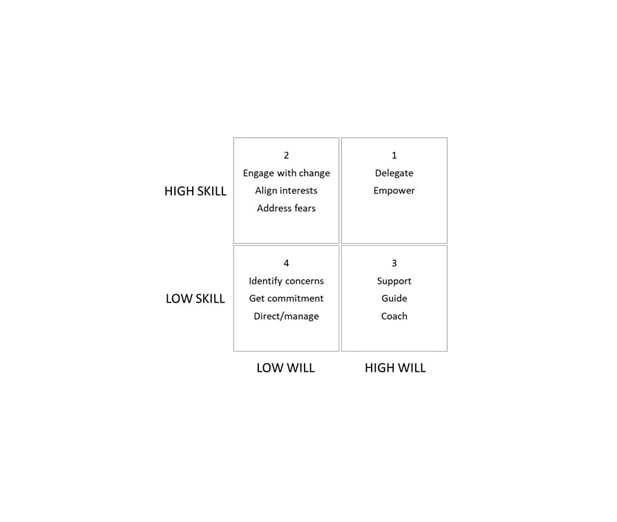Motivating Sales Teams To Adapt For Success
Is your field sales team evolving at the same pace as your B2B offering?
You’ll probably have seen some changes in what you’re selling (and how you’re selling it) over the last few years. Previously licensed products are shifting towards SaaS subscription models, new features are being added to meet shifting market needs and trends, and technical capabilities are increasing all the time.
As your proposition adapts and matures, your sales force needs to be able to hold increasingly complex conversations:
- Extending their influence to reach and engage key decision makers and influencers further up the relationship chain.
- Showing a heightened understanding of their prospect’s needs, and demonstrating solutions in a relevant manner.
- Addressing the (often unspoken) personal agendas that can be critical drivers for purchase decisions.
At the same time, your salespeople still need to be nurturing existing relationships to avoid creating a vacuum for competitors to exploit. And if your offering has grown and improved with maturity, they may also have to overcome legacy perceptions about previous limitations of the solutions they’re selling.
How to enable salespeople to grow and adapt is a challenge that all sales leaders face at some stage, and can be made more difficult when individual team members are at different levels of personal development. So where do you start?
Focus on the most effective approach for each person
While labelling isn’t always useful, it can help you to rationalise a situation, particularly if you’re trying to influence a number of very different individuals to all do the same thing. Using just two criteria – level of skill and level of will – you can group your sales team into four separate categories, shown in this matrix.

- HIGH SKILL, HIGH WILL
People who are capable of the required change and have the will to rise to the challenge. - HIGH SKILL, LOW WILL
Those who are capable but don’t have the will to go through the pain, or might not have the confidence to be bold. - LOW SKILL, HIGH WILL
Those who aren’t currently able to deliver but have the will to get there. - LOW SKILL, LOW WILL
Those who aren’t currently able, and don’t appear to have the will to change.
It’s important to remember that this approach to identifying differing needs (and potential blockers) within your sales team applies by task, challenge or strategy, and not by person. Someone who sits in quadrant 4 for one task, for example, could easily be in quadrant 1 for another.
Driving personal growth for sales field team members is a constant challenge for sales leaders, and cultivating the right positive mindset – the will to change and grow – is often the key to success.
Overcoming the challenge of low will
While low skill can usually be addressed with training, coaching and practise, it’s important to recognise that low will isn’t always simply an indicator of disinterest. And it’s certainly not an immovable barrier.
When low will is an indicator of fear
This can often be a sign that someone sees change as a threat, or resists change because of a lack of information/understanding. For example, the introduction of a new remuneration structure can be viewed by some people as a direct threat to their power or previously held status. Or someone may believe that a new way of doing things will make their job more difficult. By identifying this emotional reaction and what is causing it, you can frame your message in a way that addresses any fears or concerns.
When low will is actually low skill
This happens when individuals don’t have the ability to do what is being asked of them, but don’t want to admit it. For instance, salespeople might not want to lose status or face criticism for admitting that they don’t know the solutions well enough. They may not know where to start developing relationships for a new line of business. Or they may simply not have enough experience or confidence to reach and influence higher and wider within organisations.
Whatever the reason, people in this group are likely to be (subconsciously) hoping that if they don’t engage with the change, it will just go away. Here, emotional management can be a route to self-recognition, enabling people to acknowledge what needs changing, and take positive steps to elevate their performance.
When low will is really a different viewpoint
It could be that the salesperson doesn’t agree with the direction that leadership has set. Here, asking effective questions and using active listening can draw out the real reasons for the lack of effort. In many cases, this may have been caused by a simple misunderstanding rather than a fundamental disagreement. By trying to understand your team member’s perspective, you can position the change message in a way that makes sense to that individual.
When low will is down to other priorities
Sometimes salespeople simply feel that they’re trying to do too much and whatever it is that you are asking them to do just doesn’t seem important enough. In these situations, it may be appropriate to help the individual to recognise and understand the consequences of not acting – certainly, no-one wants to be left behind or overlooked. People with their head in the sand cannot see what’s coming, so helping them to envision the long-term impact of their actions (or inactions) is ethical and in their interests. The most positive way to do this is by eliciting the wider and longer-term consequences from them, as making a transactional threat can often reinforce the negative behaviour.
Interested in finding out how Applied Influence Group can help you to build influence capability in your sales team? Get in touch on info@appliedinfluencegroup.com.


